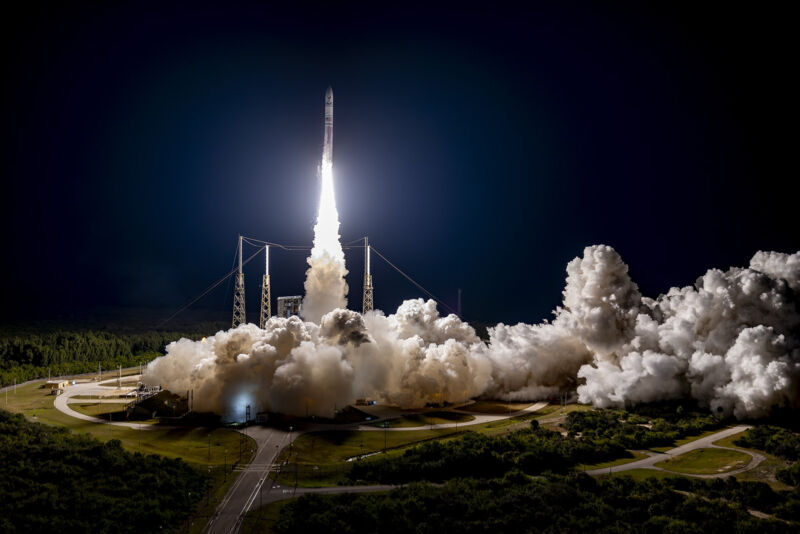
Enlarge / The first Vulcan rocket fires off its launch pad in Florida.
United Launch Alliance
CAPE CANAVERAL, Florida—Right out of the gate, United Launch Alliance’s new Vulcan rocket chased perfection.
The Vulcan launcher hit its marks after lifting off from Florida’s Space Coast for the first time early Monday, successfully deploying a commercial robotic lander on a journey to the Moon and keeping ULA’s unblemished success record intact.
“Yeehaw! I am so thrilled, I can’t tell you how much!” exclaimed Tory Bruno, ULA’s president and CEO, shortly after Vulcan’s departure from Cape Canaveral. “I am so proud of this team. Oh my gosh, this has been years of hard work. So far, this has been an absolutely beautiful mission.”
This was a pivotal moment for ULA, a 50-50 joint venture between Boeing and Lockheed Martin. The Vulcan rocket will replace ULA’s mainstay rockets, the Atlas V and Delta IV, with lineages dating back to the dawn of the Space Age. ULA has contracts for more than 70 Vulcan missions in its backlog, primarily for the US military and Amazon’s Project Kuiper broadband network.
The Vulcan rocket lived up to the moment Monday. It took nearly a decade for ULA to develop it, some four years longer than anticipated, but the first flight took off at the opening of the launch window on the first launch attempt.
Standing 202 feet (61.6 meters) tall, the Vulcan rocket ignited its two BE-4 main engines in the final seconds of a smooth countdown. A few moments later, two strap-on solid rocket boosters flashed to life to propel the Vulcan rocket off its launch pad at 2: 18 am EST (07: 18 UTC).
On the money
The BE-4 engines and solid-fueled boosters combined to generate more than 2 million pounds of thrust, vaulting Vulcan off the launch pad and through a thin cloud layer. A little over a minute after launch, Vulcan accelerated faster than the speed of sound, then jettisoned its strap-on boosters to fall into the Atlantic Ocean.
Then it was all BE-4. Each of these engines can produce more than a half-million pounds of thrust, consuming a mixture of liquified natural gas—essentially methane—and liquid oxygen. They are built by Blue Origin, the space company founded by billionaire Jeff Bezos. This was the first time BE-4s have flown on a rocket.
Rob Gagnon, ULA’s telemetry commentator, calmly called out mission milestones. “BE-4s continue to operate nominally… Vehicle is continuing to fly down the center of the range track, everything looking good… Nice and smooth operation of the booster.”
The BE-4s fired for five minutes, then shut down to allow Vulcan’s first stage booster to fall away from the rocket’s hydrogen-fueled Centaur upper stage. Two RL10 engines ignited to continue the push into orbit, then switched off as the upper stage coasted over the Atlantic and Africa. A restart of the Centaur upper stage 43 minutes into the flight gave the rocket enough velocity to send Astrobotic’s Peregrine lunar lander toward the Moon.
The nearly 1.5-ton spacecraft separated from Vulcan’s Centaur upper stage around 50 minutes after liftoff. “We have spacecraft separation, right on time,” Gagnon announced.
With Astrobotic’s lander deployed, a third engine firing on the Centaur upper stage moved the rocket off its Moon-bound trajectory and onto a course into heliocentric orbit. “We have now achieved Earth escape,” Gagnon said.
The spent rocket stage will become a human-made artificial satellite of the Sun. A plate on the side of the Centaur upper stage contains small capsules holding the cremated remains of more than 200 people, a “memorial spaceflight” arranged by a Houston-based private company named Celestis.